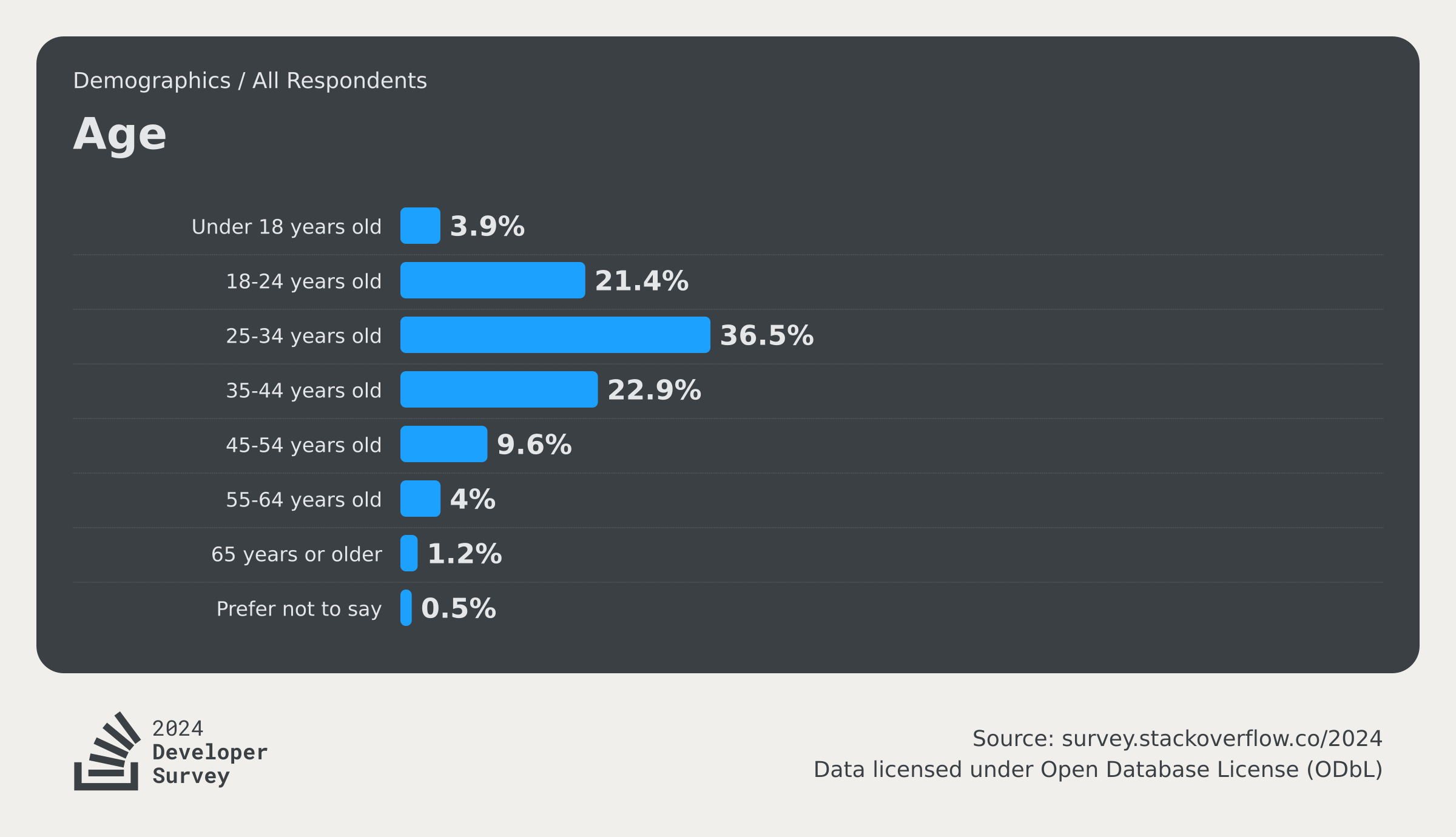It would be a hard number to range. Do you lump part time, full time and hobbyist into the range?
n
How long is a string?
I think scientists have theories on that.
…what? Is that not what string theory is??? Well apperently I do not have a working knowledge on string theory then!
…I don’t actually. No clue what it really is. Apperently the universe is made up of strings at a molecular level or something? Or maybe space is full of strings? I DON’T KNOW, OK???
ok…
my guess, based solely on the comments and posts I see on the lemmyverse, is about 16.
I would guess there’s an upward slope of young contributors that reduce significantly at post-grad and early career ages (e.g. early-mid-twenties) followed by another upward gradient on a 5-10 year delay that peaks in the late 30s then falls somewhat linearly up to 60s.
The median age of the younger/learning cohort might be 19 and falling. The median age of the established developer cohort might be mid-40s and climbing.
average working age?
Like, who is coding the apps that I use? Teenagers? Senior citizens? Mothers in a mid-life crisis?
With open source it’s either someone incredibly dedicated to doing things for other people (unicorns), someone being paid by a company to do it (workhorses. Some might have a horn, it’s hard to tell. Or the company’s the unicorn), or it’s someone with programming knowledge who also needs and wants to use the software they’re writing (hobbyists).
Outside of the horse analogues, you probably need to look at the demographics of the users of said software and put the programmer somewhere within that bell curve. As to precisely where, I’d guess not at the low end as they’ve had to gain at least some programming experience along with the knowledge of the topic the software is about.
For the unicorns and the paid devs, well, they could be anyone.
There are bound to be systemic skews not accounted for here. More men tend to go into programming than women, for example, or at least that used to be the case.
I see this from the Stack Overflow survey. But that’s not limited to open source.

Fwiw this chimes with my online experience
So apperently they stsrt dying after age 45…interesting.
Yeah all that pizza and monster energy ain’t good for the body
You think I’m programming for free at my age?
I’m at my age now and I’m just starting programming. My plan is to never do it for money, only because I want to as a hobby.
I did not respond to this survey, but I’m an open source “programmer” and I’m in the 4% group in that chart.
And how was the civil war?
Which one?







